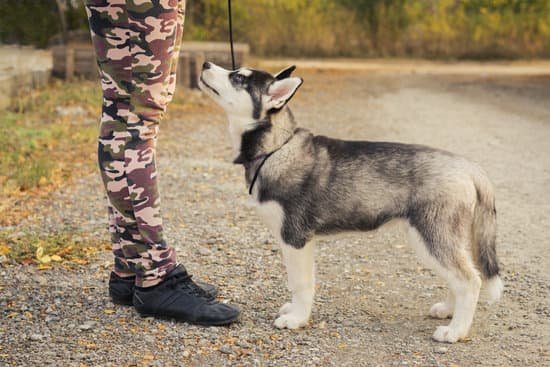Remote dog training collars have become a popular tool for pet owners looking to train their dogs effectively. These collars offer a convenient and efficient way to communicate with your pet from a distance, using various forms of stimulation. In this article, we will explore the basics of remote dog training collars, the different types available, and the benefits they offer for both pets and their owners.
When it comes to remote dog training collars, there are three main types: shock, vibration, and sound. Each type serves a different purpose and can be used to address specific behavioral issues in dogs. Understanding the differences between these collar types is essential for choosing the right one for your pet’s needs.
Using remote dog training collars can result in improved behavior and obedience in dogs when used correctly. These collars provide an effective way to reinforce commands and discourage unwanted behaviors without physically restraining or intimidating the dog. Additionally, they can be especially useful for off-leash training and addressing behavior problems such as excessive barking or jumping.
Types of Remote Dog Training Collars
When it comes to remote dog training collars, there are three main types available on the market: shock, vibration, and sound. Each type has its own unique features and benefits, catering to different training needs and preferences.
Shock collars, also known as e-collars, deliver a mild electric stimulation to the dog’s neck when activated by the handler. This type of collar is often used for reinforcing commands and correcting undesirable behaviors. It is important to use shock collars with caution and under the guidance of a professional trainer, as misuse can lead to psychological and physical harm to the dog.
Vibration collars work by delivering a subtle vibration or buzzing sensation to get the dog’s attention. This type of collar is often used for training deaf dogs or for owners who prefer not to use shock as a form of correction. Vibration collars are effective in redirecting the dog’s behavior without causing discomfort or pain.
Sound collars emit an audible tone or high-pitched sound when activated. This type of collar is commonly used for training purposes such as recall or deterring nuisance behaviors like excessive barking. Sound collars are considered a more gentle and non-invasive form of training compared to shock or vibration collars.
Ultimately, the choice of which type of remote dog training collar to use depends on your dog’s temperament, behavior issues, and your personal training preferences.
| Types of Remote Dog Training Collars | Features |
|---|---|
| Shock Collar | Mild electric stimulation; effective for reinforcing commands |
| Vibration Collar | Subtle vibration; suitable for deaf dogs; non-invasive training method |
| Sound Collar | Audible tone/high-pitched sound; gentle form of correction; effective for recall training |
Benefits of Using Remote Dog Training Collars
Behavior Modification
One of the key benefits of using remote dog training collars is the ability to modify your dog’s behavior. Whether you are dealing with excessive barking, leash pulling, or jumping up on people, these collars can help address these behavioral issues. By delivering a quick and consistent correction when undesired behavior occurs, remote dog training collars can effectively communicate to your dog what is acceptable and what is not.
Obedience Training
Remote dog training collars can also be valuable tools for teaching basic obedience commands such as sit, stay, and come. The ability to provide immediate feedback to your dog from a distance can aid in reinforcing these commands. With consistent use of the collar during training sessions, dogs can learn to respond to commands even without the presence of the collar, leading to improved obedience overall.
Positive Reinforcement
Contrary to some misconceptions about remote dog training collars being cruel or inhumane, they can actually be used as a form of positive reinforcement. By associating the correction with the behavior rather than with the owner’s presence, dogs can learn to make better choices on their own. This can lead to an overall improvement in behavior and obedience both at home and in public settings.
In summary, remote dog training collars offer several benefits when it comes to improving a dog’s behavior and obedience. From addressing specific behavioral issues to teaching basic obedience commands, these collars can be valuable tools for pet owners looking to train their dogs effectively. When used correctly and responsibly, remote dog training collars can contribute to a well-behaved and obedient canine companion.
Choosing the Right Remote Dog Training Collar for Your Dog
When it comes to choosing the right remote dog training collar for your furry friend, there are several factors to consider. These factors can help you determine the most suitable collar for your dog’s specific needs and behavior.
Size and Breed of Your Dog
One important factor to consider when choosing a remote dog training collar is the size and breed of your dog. Different breeds have different temperaments and sensitivities, so it’s crucial to select a collar that is appropriate for your dog’s size and breed. For example, a small, sensitive breed may require a more gentle vibration or sound collar, while a larger, more stubborn breed may respond better to a shock collar.
Training Needs
Consider your dog’s specific training needs when selecting a remote training collar. Does your dog simply need reinforcement of basic commands, or does he have more severe behavioral issues that require stronger correction? Understanding your training goals will help you choose the right type of stimulation for your dog.
Features and Settings
Look for remote training collars with adjustable settings and features that cater to your dog’s individual needs. Some collars offer a range of stimulation levels, while others may have additional features such as tone-only mode or an automatic safety shut-off. Consider what features are important for effectively training your dog while ensuring his safety and comfort.
By considering these factors when choosing a remote dog training collar, you can make an informed decision that will lead to successful training outcomes for both you and your canine companion.
How to Properly Use Remote Dog Training Collars
When using remote dog training collars, it is important to ensure that they are used in the proper manner to effectively train your dog. Here are some training techniques and tips to help you use remote dog training collars properly:
- Begin with positive reinforcement: Before using the remote collar, it’s essential to establish a foundation of positive reinforcement training with your dog. This will help create a strong bond between you and your pet and make the training process more effective.
- Start with low levels of stimulation: When introducing the remote dog training collar, start with the lowest level of stimulation to gauge your dog’s response. Gradually increase the intensity if necessary, but always start at the lowest setting.
- Use consistent commands: It’s important to be consistent with your commands when using the remote collar. Your dog needs to associate specific commands with certain behaviors, so make sure to use the same cues each time.
Additionally, it is crucial to understand that remote dog training collars should not be used as a punishment tool but rather as a way to communicate with your dog in a clear and consistent manner. By following these training techniques and tips, you can effectively use remote dog training collars as part of a comprehensive training program for your pet.
Lastly, it’s recommended to seek professional advice or guidance when incorporating remote dog training collars into your pet’s behavioral modification plan. A certified trainer or behaviorist can provide personalized recommendations based on your dog’s specific needs and behaviors, ensuring that you are using the collar in a safe and effective manner. Remember that proper usage of remote dog training collars is crucial in achieving positive results in your pet’s behavior modification journey.
Remote Dog Training Collars vs Traditional Training Methods
Remote dog training collars have become a popular tool for pet owners seeking to improve their dog’s behavior and obedience. However, it’s important to consider how they compare to traditional training methods. While traditional training methods often involve verbal commands, treats, and physical reinforcement, remote dog training collars offer a more hands-off approach.
One of the key differences between remote dog training collars and traditional methods is the level of control they provide. With a remote collar, the trainer can deliver consistent and immediate correction from a distance, allowing for more effective communication with the dog. In contrast, traditional methods may require the trainer to be in close proximity to the dog at all times, limiting their ability to correct unwanted behaviors from afar.
Another factor to consider is the impact on the human-dog relationship. Traditional training methods rely heavily on positive reinforcement, building trust and rapport between the owner and their pet. Remote dog training collars, when used correctly, can also strengthen this bond by providing clear communication and guidance for the dog.
Moreover, remote dog training collars are not meant to replace traditional methods entirely but rather complement them. They can be especially useful for addressing specific behavioral issues or reinforcing commands in outdoor or distracting environments where verbal communication may not be effective. It’s important for pet owners to weigh the pros and cons of each method and determine what works best for their unique situation and their dog’s individual needs.
Common Misconceptions About Remote Dog Training Collars
There are numerous misconceptions surrounding the use of remote dog training collars, leading to some controversy and skepticism among pet owners. One common myth is that these collars are cruel and cause harm to the dogs. In reality, when used properly and at the right intensity level, remote dog training collars can be a safe and effective tool for training your furry friend.
Another misconception is that remote dog training collars are only meant for aggressive or dominant dogs. The truth is, these training tools can be useful for dogs of all temperaments and behaviors. Whether you have a stubborn or overly energetic dog, a remote dog training collar can aid in teaching them obedience and proper behavior.
Lastly, some may believe that using a remote dog training collar is an easy way out of putting in time and effort into training their dogs. However, it’s important to understand that these collars should be used as a supplement to proper training techniques rather than a replacement for them. When used alongside positive reinforcement and consistency, remote dog training collars can be incredibly beneficial in shaping your dog’s behavior.
| Misconception | Truth |
|---|---|
| Remote Dog Training Collars are cruel | When used properly, they are safe and effective |
| Collars are only for aggressive dogs | They can help train dogs of all temperaments |
| Using a collar is an easy way out of proper training | It should be used as a supplement to good training techniques |
By debunking these myths and understanding the reality behind remote dog training collars, pet owners can make informed decisions about whether this type of tool is suitable for their canine companions. It’s important to always do thorough research and consult with a professional trainer before implementing any new training method for your beloved pet.
The Future of Remote Dog Training Collars
As we look ahead to the future of remote dog training collars, we can anticipate further advancements and innovations in the industry. With technology constantly evolving, it is likely that remote dog training collars will become even more sophisticated, offering additional features and capabilities to aid in training and behavior modification for our furry companions.
One potential advancement in the industry could be the integration of GPS technology into remote dog training collars. This could provide pet owners with the ability to track their dogs’ location and movement while also using the collar for training purposes. The combination of GPS tracking and training functionality would offer a comprehensive solution for both control and safety when it comes to our pets.
Furthermore, we may see advancements in the customization and personalization of remote dog training collars, allowing owners to tailor the training experience to their specific dog’s needs and personality. This could involve adjustable settings for shock or vibration intensity, as well as the ability to record and analyze data on your dog’s behavior and response to training stimuli.
In conclusion, as we move forward into the future, it is clear that remote dog training collars will continue to evolve and improve. With a focus on integrating new technologies and providing more personalized solutions, these devices have the potential to greatly benefit both pet owners and their beloved canine companions.
As we await these exciting developments in the industry, it is important for all pet owners to continue educating themselves on proper usage and best practices when it comes to utilizing remote dog training collars.

Welcome to the blog! I am a professional dog trainer and have been working with dogs for many years. In this blog, I will be discussing various topics related to dog training, including tips, tricks, and advice. I hope you find this information helpful and informative. Thanks for reading!





